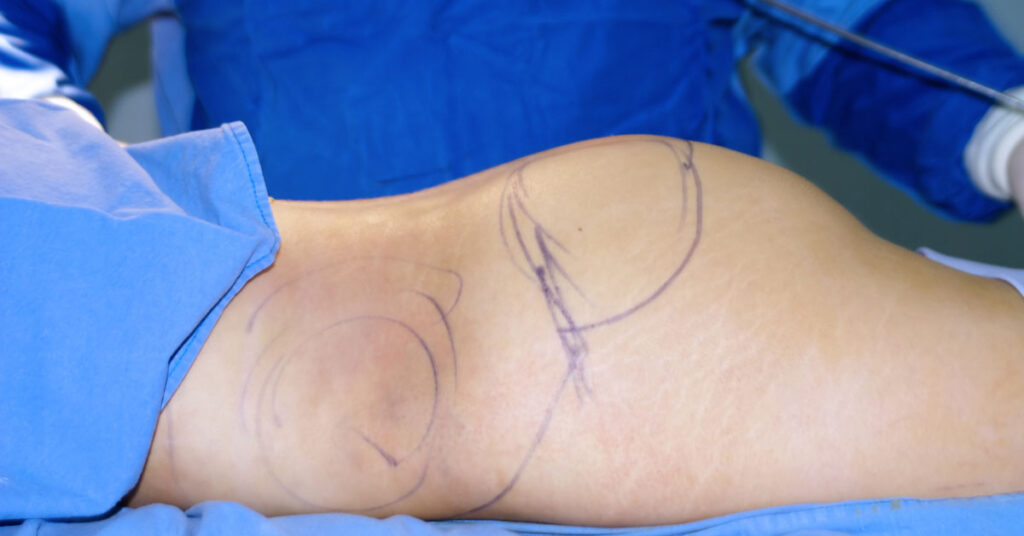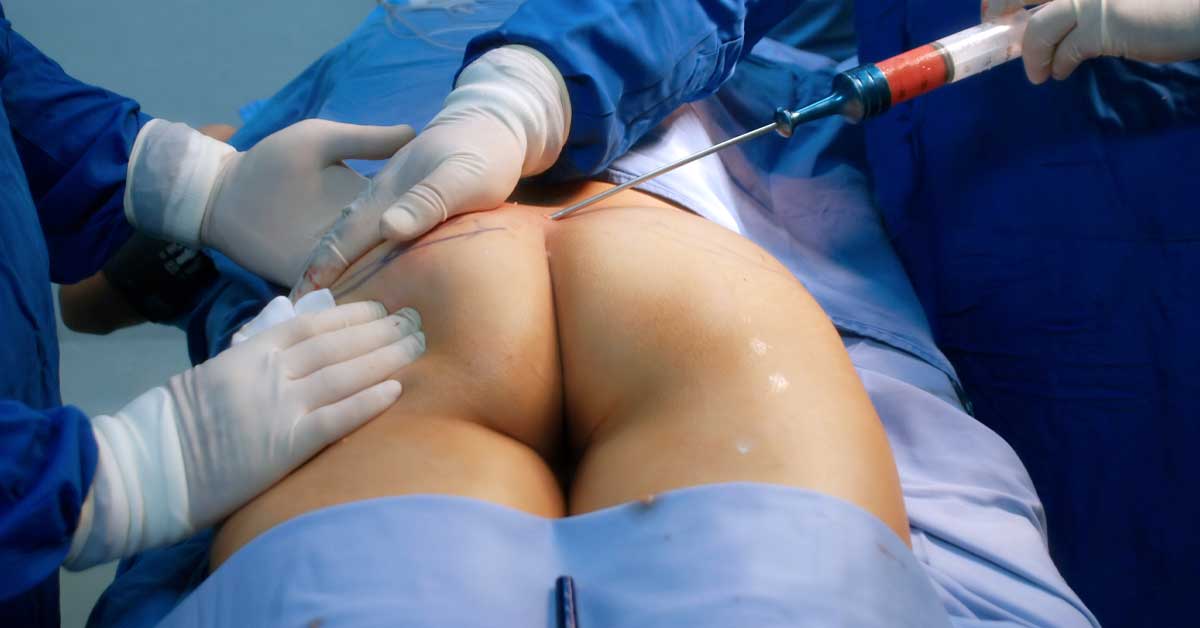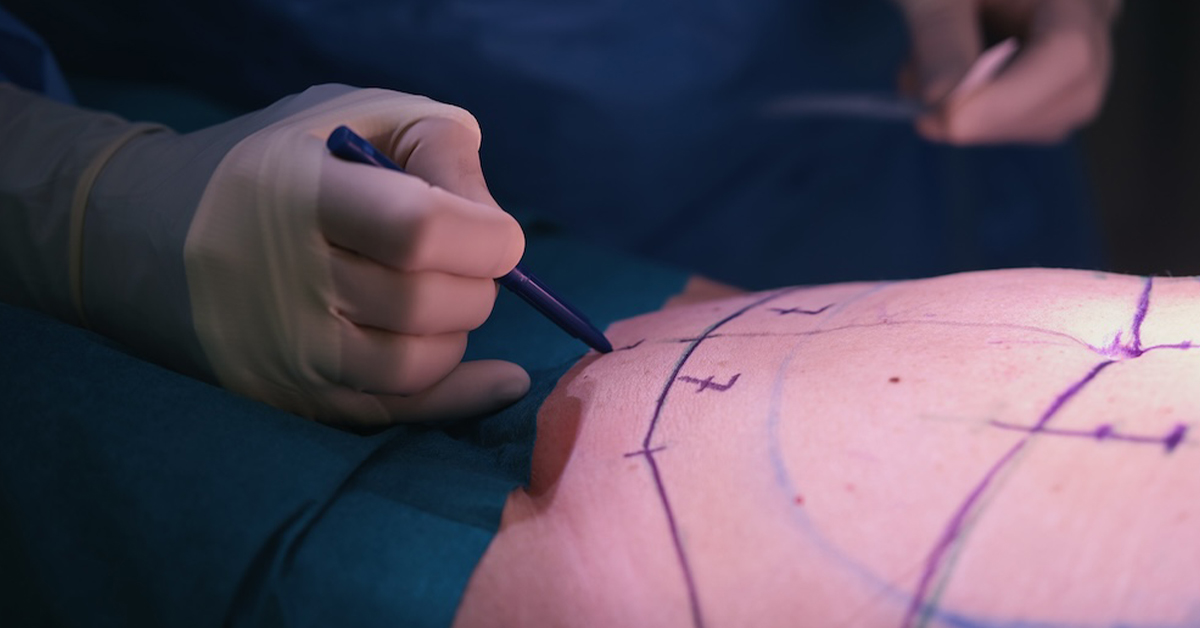Fat Embolism Syndrome After BBL: Symptoms, Diagnosis, and Treatment
Are you considering a Brazilian butt lift (BBL) to enhance your curves? While the procedure is popular for its ability to transfer fat to the buttocks, it’s important to be aware of the potential risks involved.
One of these risks is fat embolism syndrome (FES), a condition where fat particles enter the bloodstream and block circulation. But how does this syndrome occur, what are the symptoms, and what can be done to treat it?
Key Highlights
-
Fat embolism syndrome (FES) can occur as a complication of BBL surgery, where fat particles enter the bloodstream and block circulation.
-
Symptoms of FES can include dizziness, shortness of breath, weakness, and fatigue.
-
Immediate medical attention is crucial for the treatment of FES, which may involve oxygen therapy and medication to alleviate symptoms and reduce complications.
-
Prevention of FES includes selecting an experienced surgeon who follows safe surgical techniques and understanding the risks and realistic outcomes of BBL surgery.
-
Research on fat embolism syndrome is limited, highlighting the need for further studies to improve patient safety and outcomes.
Understanding Fat Embolism Syndrome
A fat embolism is a condition where fat particles enter the bloodstream and cause a blockage, typically in the lungs or other major organs. Fat embolisms commonly occur after fractures to the long bones, but can also occur as a complication of surgeries like BBL.
Fat embolism syndrome (FES) refers to the severe form of fat embolism that can lead to life-threatening complications.
It’s important to differentiate between fat embolism and pulmonary embolism, as the latter involves blood clots instead of fat particles. While both conditions can have serious consequences, understanding the distinct nature of fat embolism is crucial for accurate diagnosis and appropriate treatment.
“A fat embolism is a condition where fat particles enter the bloodstream and cause a blockage, typically in the lungs or other major organs.”
Causes of Fat Embolism
Fat embolism commonly occurs after fractures to the long bones, such as those in the arms or legs. When a bone is broken, the fat from the bone marrow can leak into the bloodstream and travel to other parts of the body. This can result in a fat embolism, where the fat particles block blood vessels and disrupt normal circulation.
Surgeries, including cosmetic procedures like BBL, can also lead to fat embolism. During these surgeries, fat tissue is often manipulated or transferred, increasing the risk of fat particles entering the bloodstream. It’s important for patients and healthcare providers to be aware of this potential complication and take necessary precautions.
Fat Embolism vs Pulmonary Embolism
While fat embolism and pulmonary embolism may cause similar symptoms and complications, they have different underlying causes. Fat embolism occurs when fat particles from the bone marrow or adipose tissue enter and obstruct blood vessels, while pulmonary embolism happens when blood clots travel and block the arteries in the lungs. Both conditions can be life-threatening and require immediate medical attention.
By understanding the distinctions between fat embolism and pulmonary embolism, healthcare providers can make accurate diagnoses and develop appropriate treatment plans to address the specific condition affecting the patient.
| Key Differences Between Fat Embolism and Pulmonary Embolism |
|---|
|
Symptoms of Fat Embolism Syndrome
Fat embolism syndrome (FES) can present with a range of symptoms, which may vary among individuals. It’s important to be aware of the warning signs of fat embolism after BBL surgery so that prompt medical attention can be sought if necessary.
Common symptoms of FES post-surgery include:
-
Dizziness: A feeling of lightheadedness or unsteadiness.
-
Shortness of breath: Difficulty breathing or a sensation of not getting enough air.
-
Wheezing: A high-pitched whistling sound when breathing.
-
Weakness: Lack of physical strength or energy.
-
Fatigue: Extreme tiredness or exhaustion.
-
Unexplained headache: A persistent or severe headache without an obvious cause.
Additional symptoms that may indicate the presence of fat embolism include seizures, confusion, rash, and signs of low oxygen levels, such as blue lips or fingertips. It’s crucial to note that these symptoms can manifest shortly after BBL surgery or even weeks or months later.
If you experience any signs of a fat embolism, it is essential to seek immediate medical attention.
“Early recognition and prompt medical intervention are crucial in managing fat embolism syndrome. If you notice any symptoms of FES post-surgery, don’t hesitate to contact your healthcare provider for evaluation.”
Diagnosis of Fat Embolism Syndrome
Fat embolism syndrome is diagnosed through a combination of clinical evaluation and specific diagnostic criteria. One commonly used set of criteria is Gurd’s criteria, which help in identifying the presence of fat embolism based on various symptoms and signs.
Gurd’s Criteria for FES Diagnosis
Gurd’s criteria include major symptoms such as:
-
Petechial rash
-
Respiratory distress
-
Neurological dysfunction
In addition to major symptoms, minor symptoms are also taken into consideration, including:
-
Fever
-
Anemia
-
Jaundice
When a patient presents with a combination of major and minor symptoms, it raises suspicion for fat embolism syndrome and further diagnostic tests are required.
Imaging Tests for Fat Embolism
Imaging tests play a crucial role in the diagnosis of fat embolism syndrome. Commonly used imaging techniques include:
-
X-rays: X-rays can help in identifying abnormalities in the lungs, such as the presence of fat particles or other signs of fat embolism.
-
Computed tomography (CT) scan: A CT scan provides detailed images of the body and can help detect fat emboli in the lungs or other organs.
It’s important to note that imaging tests may not always show abnormalities, even in the presence of fat embolism. Therefore, a combination of clinical evaluation and imaging tests is necessary for an accurate diagnosis.
| Diagnostic Method | Advantages | Limitations |
|---|---|---|
| X-rays | – Easily accessible and affordable – Can detect certain abnormalities in the lungs |
– May not always show abnormalities – Cannot provide detailed images |
| CT scan | – Provides detailed images – Can detect fat emboli in various organs |
– More expensive and less accessible – Requires exposure to radiation |
Treatment of Fat Embolism Syndrome
Fat embolism syndrome is a medical emergency that requires immediate treatment. Prompt medical attention and appropriate treatment can greatly improve the prognosis of fat embolism syndrome after BBL surgery.
Supportive Care for FES
In the emergency treatment of fat embolism syndrome, supportive care is the cornerstone. This involves close monitoring of the patient’s vital signs, maintaining oxygen levels, and ensuring proper hydration through intravenous fluids. Additionally, mechanical ventilation may be necessary to assist with breathing if respiratory distress occurs.
These measures help stabilize the patient and mitigate the risk of complications.
Medication for Fat Embolism Syndrome
Medications may be prescribed to manage symptoms and minimize the risk of complications in fat embolism syndrome. Steroids, such as methylprednisolone, can help reduce inflammation and alleviate respiratory distress.
Heparin, an anticoagulant, may also be administered to prevent the formation of blood clots. It’s important to note that the effectiveness of these medications for fat embolism syndrome is still under research and may vary depending on the individual case.
“Immediate medical attention and proper treatment can greatly improve the prognosis of fat embolism syndrome after BBL surgery.”
Prevention of Fat Embolism Syndrome
To minimize the risk of fat embolism syndrome (FES) after Brazilian butt lift (BBL) surgery, it is best to carefully consider the decision to undergo the procedure. However, for those who still choose to proceed, there are important guidelines to follow for a safer surgery.
Choose a Licensed and Experienced Surgeon
When selecting a surgeon for your BBL surgery, it is critical to choose a licensed and experienced professional who understands the risks and complications associated with the procedure. A reputable surgeon will prioritize your safety and follow safe surgical guidelines to minimize the risk of fat embolism.
Avoid Deep Muscle Injections
One key guideline for safe BBL surgery is to avoid injecting fat deep into the muscle. Instead, the fat grafting should be performed under the skin. This technique helps to minimize the risk of fat entering the bloodstream and causing a blockage, reducing the chances of fat embolism.
Realistic Expectations and Informed Decision-Making
Before undergoing BBL surgery, it is essential to have realistic expectations about the procedure and its outcomes. Understanding the risks and potential complications, including fat embolism syndrome, can help you make an informed decision. Open and honest communication with your surgeon is crucial in this process.
“Choosing a licensed and experienced surgeon, avoiding deep muscle injections, and having realistic expectations are key steps to minimize the risk of fat embolism syndrome in BBL surgery.”
Risk Factors for Fat Embolism Syndrome
Certain factors can increase the risk of developing fat embolism syndrome after BBL. It’s crucial for patients and surgeons to be aware of these risk factors and take appropriate precautions to minimize the risk of fat embolism and its complications.
Factors Increasing Fat Embolism Risk after BBL
1. Gender: Being male increases the risk of fat embolism syndrome after BBL surgery.
2. Age: Individuals aged between 20 and 30 are more prone to developing fat embolism syndrome.
3. Fractures: Having a closed fracture, especially in the lower extremities and pelvis, increases the risk of fat embolism syndrome after BBL.
4. Multiple Fractures: Having multiple fractures also raises the risk of fat embolism syndrome post-BBL surgery.
By understanding these risk factors, patients can have informed discussions with their surgeons, and surgeons can implement appropriate measures to minimize the occurrence of fat embolism and its potentially life-threatening complications.
| Risk Factors | Description |
|---|---|
| Gender | Being male |
| Age | 20-30 years old |
| Fractures | Having a closed fracture, particularly in the lower extremities and pelvis |
| Multiple Fractures | Having multiple fractures |
Post-operative Care and Recovery
After undergoing a Brazilian butt lift (BBL) surgery, it is essential to prioritize post-operative care and closely monitor your recovery process. This phase plays a crucial role in ensuring a safe and successful outcome, minimizing the risk of complications, and promoting optimal healing.
One of the most important aspects of post-operative care is regular monitoring for any signs of fat embolism or other potential complications. This involves scheduling and attending regular check-ups and follow-up appointments with your surgeon. These appointments allow your surgeon to evaluate your progress, address any concerns, and make any necessary adjustments to your recovery plan.
In addition to monitoring, it is crucial to follow the post-operative care guidelines provided by your surgeon. These guidelines are tailored to your specific case and may include important instructions on wound care, activity restrictions, and medication usage.
Activity Restrictions
During the early stages of recovery, it is common to have activity restrictions to ensure proper healing and minimize the risk of complications. Your surgeon may advise you to avoid strenuous activities, heavy lifting, and prolonged sitting or pressure on the buttocks. These restrictions are typically temporary and gradually lifted as you heal.
Wound Care
Proper wound care is essential to prevent infection and promote healing. Your surgeon will provide specific instructions on how to clean and care for your incisions. This may involve keeping the incision site clean and dry, applying prescribed ointments or dressings, and avoiding exposure to excessive moisture or contaminants.
Compression Garments
Wearing compression garments is often recommended after BBL surgery. These garments help minimize swelling, promote circulation, and support the surgical area. Your surgeon will provide guidance on when and how long to wear these garments for optimal results.
Medication Usage
Your surgeon may prescribe medications such as pain relievers or antibiotics to manage discomfort and prevent infection. It is essential to follow the prescribed dosage and complete the full course of medication as instructed.
By closely adhering to the post-operative care guidelines and regularly monitoring your recovery progress, you can significantly contribute to a safe and successful healing process. It is crucial to communicate openly with your surgeon, follow their recommendations, and promptly report any concerning symptoms or issues.
Conclusion
Fat embolism syndrome after Brazilian butt lift (BBL) surgery is a serious and potentially life-threatening complication. It is important for individuals undergoing BBL to be aware of the signs and symptoms of fat embolism and to seek immediate medical attention if they occur. Prompt diagnosis and treatment are crucial to prevent severe complications.
Prevention plays a vital role in minimizing the risk of fat embolism after BBL. Choosing an experienced and licensed surgeon who follows safe surgical techniques is paramount. Understanding the risks and realistic outcomes of the procedure is also essential. By taking these precautions, individuals can reduce the chances of developing fat embolism syndrome.
Frequently Asked Questions
Fat Embolism Syndrome is a severe medical condition that occurs when fat particles enter the bloodstream and block circulation, typically after fractures or surgeries, including Brazilian butt lift (BBL).
During BBL surgery, fat tissue is manipulated or transferred, which can increase the risk of fat particles entering the bloodstream and causing a blockage.
Symptoms include dizziness, shortness of breath, wheezing, weakness, fatigue, unexplained headaches, seizures, confusion, rash, and signs of low oxygen levels like blue lips or fingertips.
Fat embolism involves blockages caused by fat particles, while pulmonary embolism is caused by blood clots. Both can block circulation in the lungs but have different origins and treatment approaches.
Diagnosis involves clinical evaluation, Gurd’s criteria, and imaging tests like X-rays and CT scans to detect abnormalities in the lungs or other organs caused by fat particles.
Brazilian Butt Lift in Miami, FL
The first step in getting a Brazilian Butt Lift (BBL) is to schedule a consultation with us. If you are interested in learning more, call us now at (305) 406-9055 or schedule a consultation online Now.









